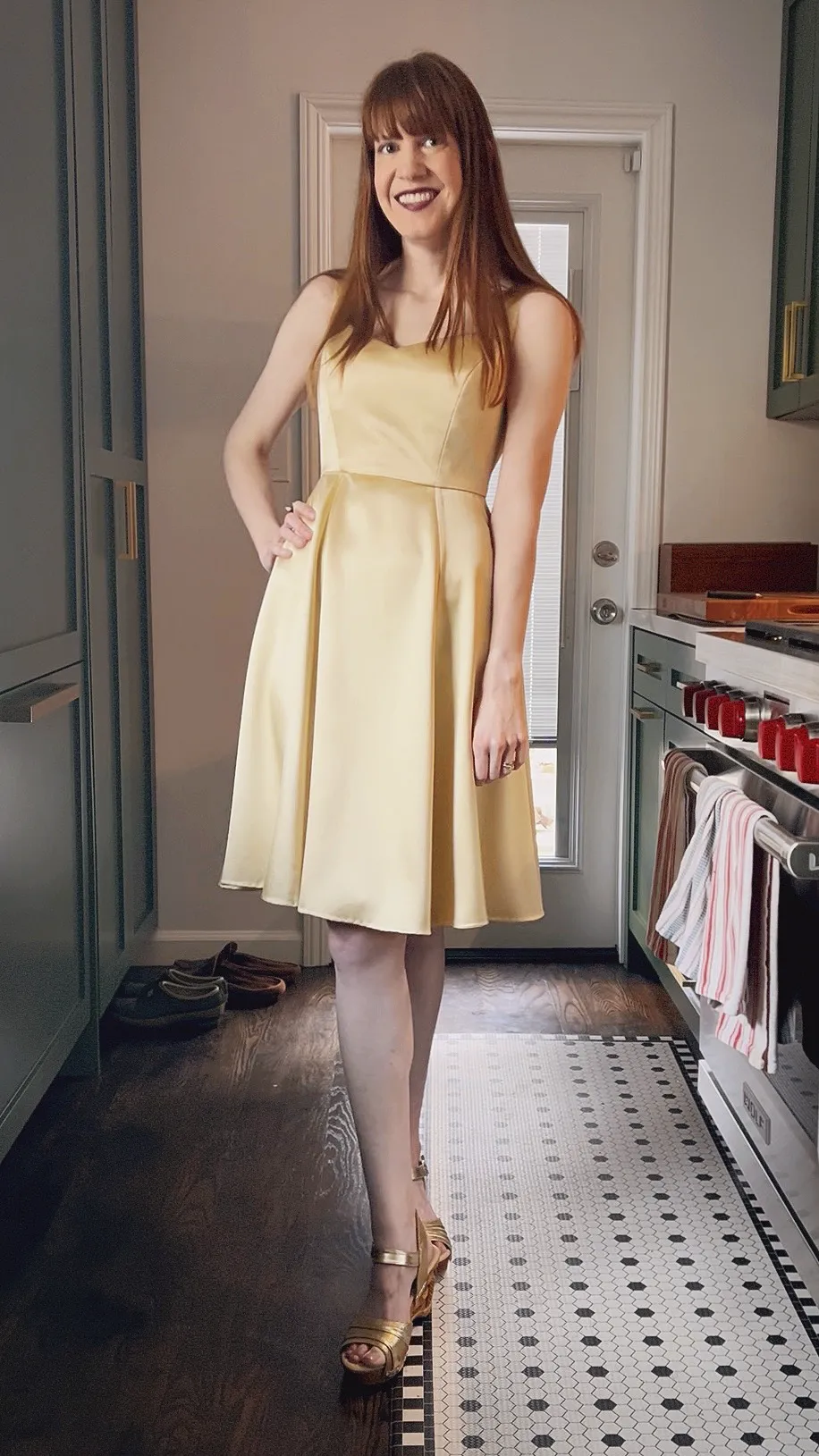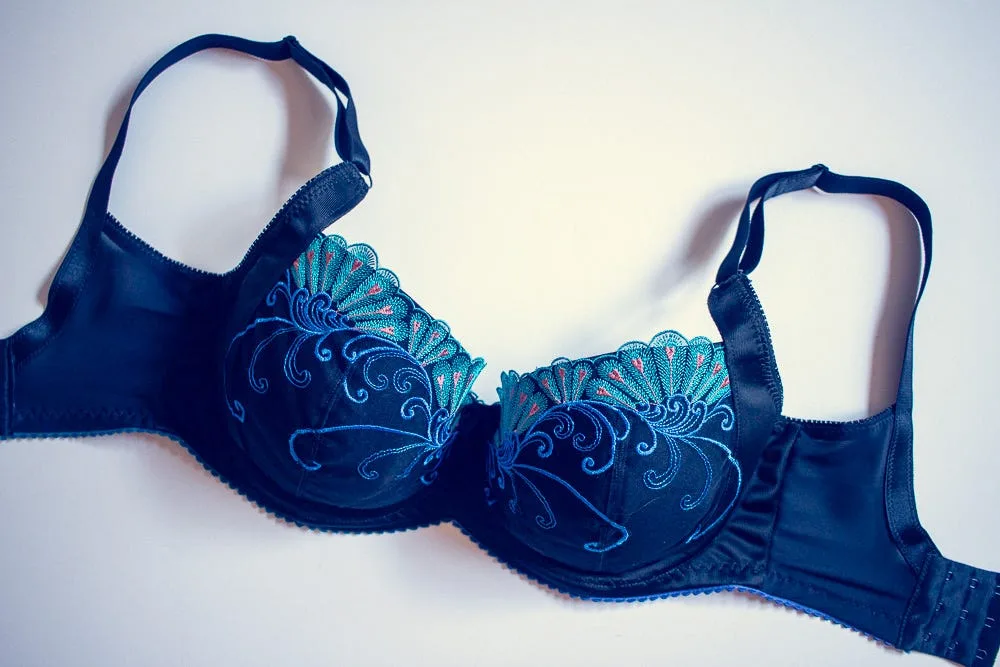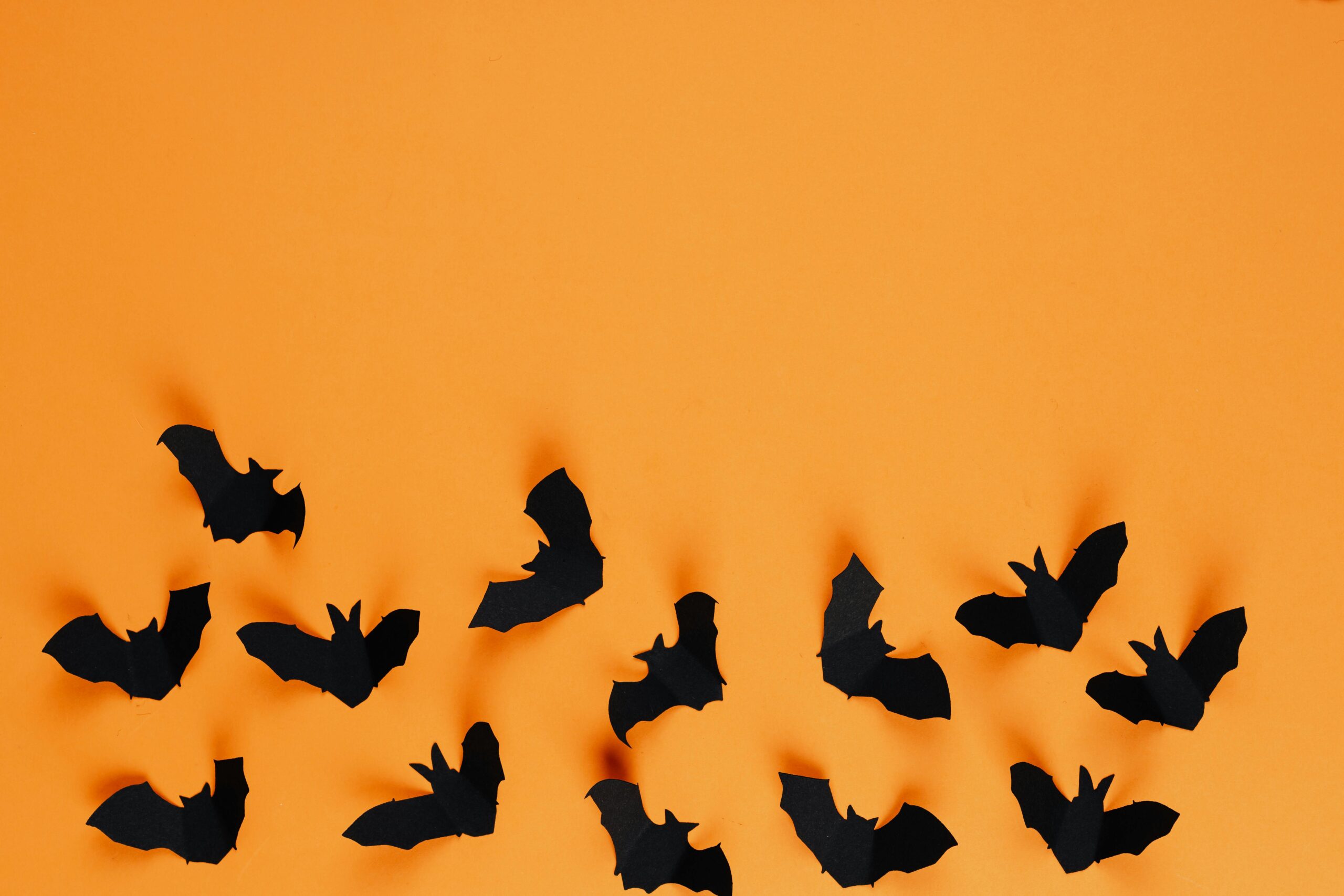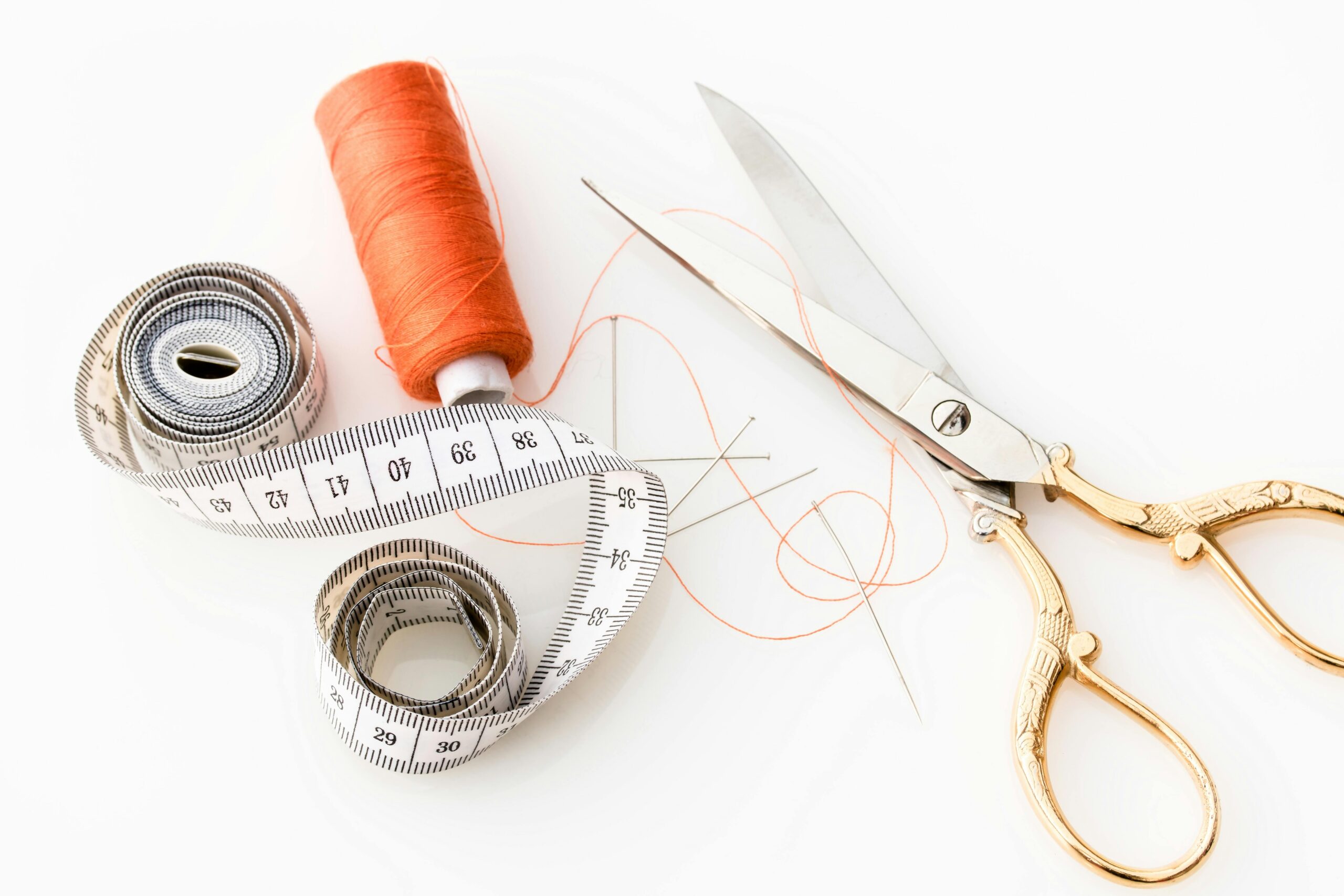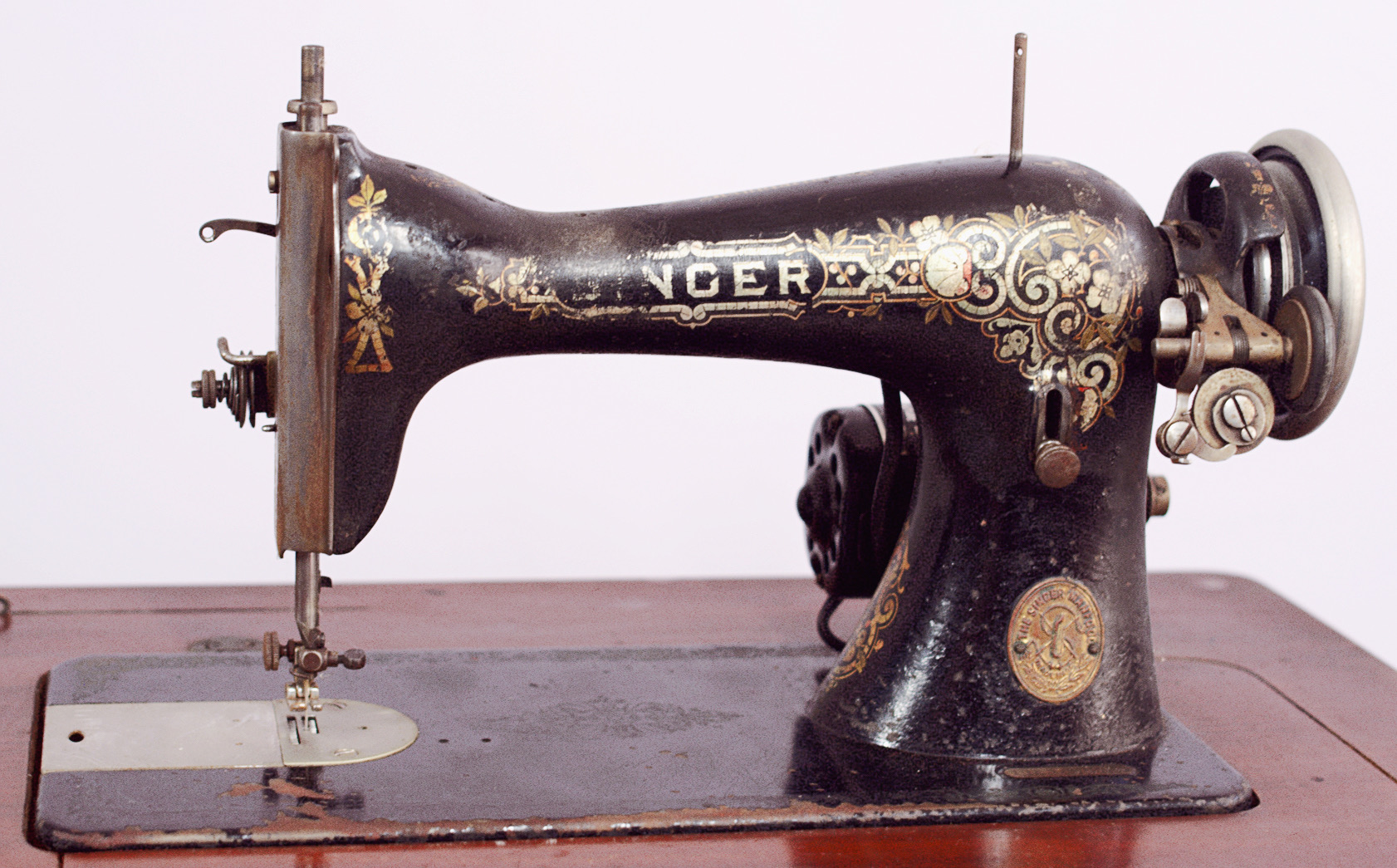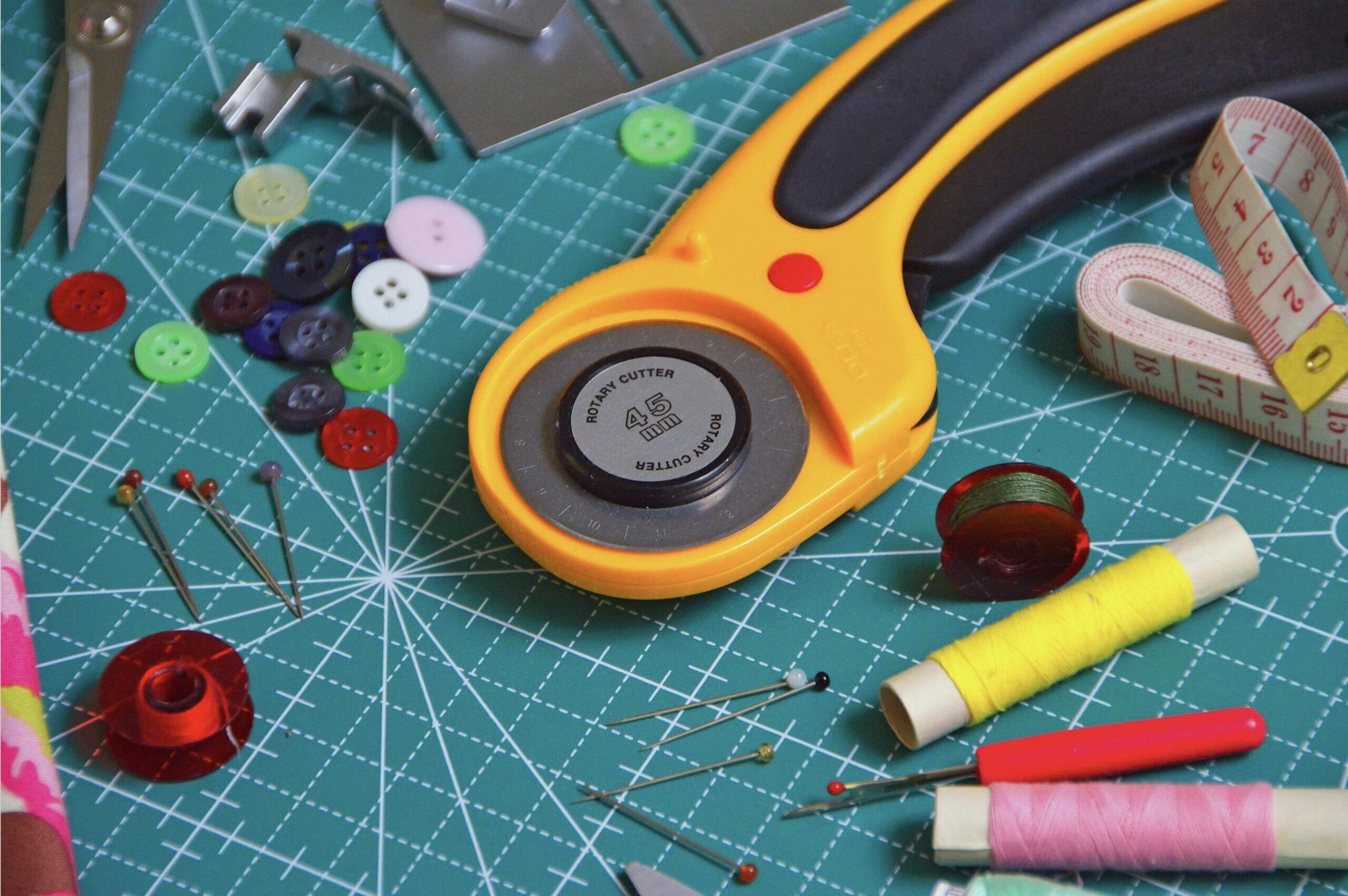In the online sewing community, you’ll often find folks talking about special fabrics — those that are too good to cut in to. These fabrics sit in fabric stashes for years, waiting for the perfect project, if one can ever be found. For me, that special fabric was a gorgeous crepe-backed gold silk satin from Mood Fabrics. I purchased it in 2019 using a gift card that my in-laws had gotten me for Christmas. Then it sat in my stash for six years, untouched. I made countless excuses not to use this beautiful fabric. I couldn’t find the right pattern. The event wasn’t important enough. I didn’t have the necessary skills to do it justice.
In some ways, that last one is true. In the end, I am glad that I waited to use my fabric. But, at the same time, I’m also happy that I finally made the decision to use it.
I finally decided to use this fabric to make a special dress for my 40th birthday. A milestone year called for something special. A good friend of mine is a member at The Magic Castle in Los Angeles, and she was able to get me a reservation for a small group on a Saturday night. If you’re unfamiliar with The Magic Castle, it’s an exclusive private club in Los Angeles that’s accessible only to members of the Academy of Magical Arts and their guests. The Magic Castle has a strict dress code — everyone who enters must dress in appropriate evening attire. As you can imagine, such a special evening required an equally special dress!
The Perfect Pattern
I’d settled on the event and the fabric — next I needed to find the right pattern. At first, I considered drafting my own dress. I also looked at options from Charm Patterns and Cashmerette. Nothing I imagined felt quite right. Then, Cashmerette released their club pattern, the Mansfield Dress, in December 1 of last year. I took one look at that gorgeous sweetheart neckline and new I’d found my pattern.
The First Toile
I prefer princess seams to darts, so I opted to mix elements of the Mansfield pattern with the Upton pattern. For my first toile, I used the back pattern pieces from the Mansfield and the front pieces from the Upton. I modified the center front to use Mansfield’s sweetheart neckline and eliminated the waistband. Then, I altered the back pieces to use a center back zipper, rather than the Mansfield’s side zip. I cut out the pattern in a size 2, grading down to a size 0 at the waist.



Above, you can see the fit of my first toile. Overall, the fit was too loose, and there was a lot of gaping along the back armholes. I adjusted the toile by removing a 1/4″ wedge out of the back armband and a 1/2″ out from the side seams.




These four images are the same toile with the aforementioned adjustments. The fit is much improved, but I still wasn’t happy with the shape of the back.
The Second Toile
At this point, I decided to use the Upton back pieces instead of the Mansfield back. I added length to match the front pieces and copied the square back neckline. I also moved the shoulder straps in by about 1/4″ to better cover my bra straps.




Here are the results of my final toile! I was very happy with the fit at this point, and was ready to begin work on the dress. You may notice a little wrinkling in the princess seams in the above images. I had already decided that I would add boning to the bodice seams of the dress, so the wrinkling didn’t worry me, as I knew the boning would straighten that out.
Sewing it All Together


Once I had a well-fitting muslin, the dress came together painlessly. The silk crepe back satin fabric was, surprisingly, a joy to work with. I interlined the bodice pieces with muslin by hand before sewing them together, then lined the bodice with a lightweight cotton/silk lining. I sewed boning channels into the bodice princess seams, side seams, and about an inch away from the back center zipper, then inserted spiral steel boning into the channels to give the bodice structure. I’ve grown to love the extra touch of professionalism that boning gives to a fitted garment!




To make this garment even more special, I took the time to finish the lining and hem by hand. I stitched a tiny hand-rolled hem, which I think looks really beautiful in this fabric. And as a final touch, I hand-sewed a waist stay to the internal waistband seam.





I’m absolutely thrilled with this dress, and I’m happy that I took my time to make it truly special. It was a beautiful gown to wear to celebrate my 40th decade. I can’t wait to wear it again for more special occasions in the future!





